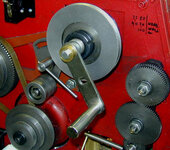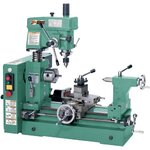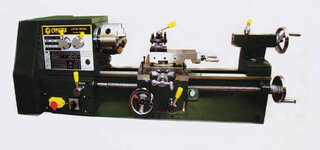Hi folks,
I keep seeing mentions of a handcrank for threading on the metal lathes. I see this mentioned even for lathes that run at 60 rpm. Does one open up the gear access door and attach this directly to the back of the spindle like the first pic, or does one attach it to the far end of the threaded drive rod like the second and third pics
As I mentioned in another thread, I'm about to get a metal lathe for multi-lead threading.
Thanks for any help!
I keep seeing mentions of a handcrank for threading on the metal lathes. I see this mentioned even for lathes that run at 60 rpm. Does one open up the gear access door and attach this directly to the back of the spindle like the first pic, or does one attach it to the far end of the threaded drive rod like the second and third pics
As I mentioned in another thread, I'm about to get a metal lathe for multi-lead threading.
Thanks for any help!



